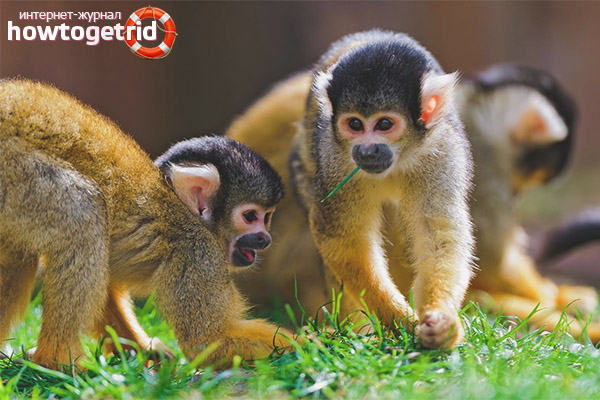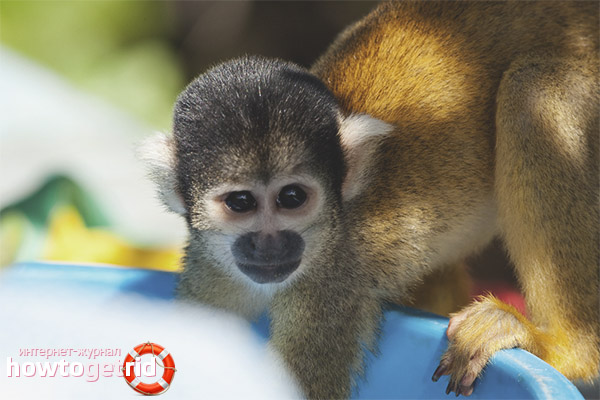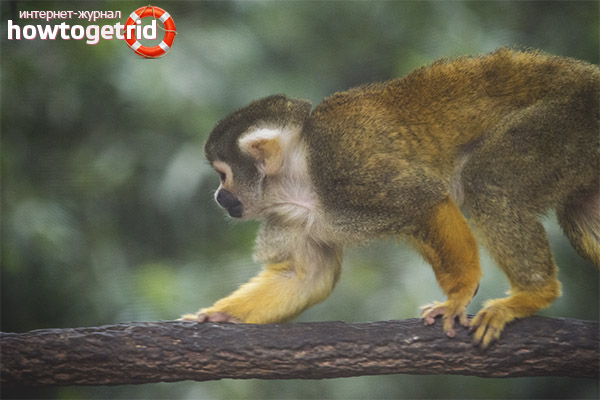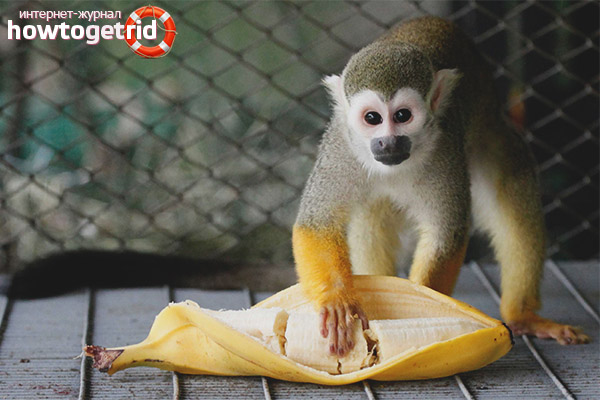The content of the article
In the world there are so many cute and funny little animals living in the wild. Among them are many that people seek to tame and domesticate. After all, not every owner needs to have a familiar cat or hamster in the house. There are many such people who just want exotic, love unusual animals or seek to envy their friends and acquaintances, showing off an unusual animal. People keep wild cats, and snakes, and iguanas in their homes.
Among these animals there is a cute monkey Saimiri. People generally are very warm towards many species of monkeys. After all, they are active and cheerful animals that are able to cheer up. In addition, they have many features that are very reminiscent of people. This applies to the appearance and behavior of monkeys.
If you believe one of the theories that the scientist Darwin put forward, then these cute little animals are our historical ancestors. Many people refute this theory and do not believe in it. But, nevertheless, it exists. In any case, monkeys always remain the favorites of the public, which amuse both children and adults.
Habitat
Representatives of the species live in tropical forests in countries such as Peru, Bolivia, Paraguay. You can also see them on Costa Rica. In South America, they have the most suitable climate. In the thickets of the rainforest, monkeys are quite cool. Here they find enough food for themselves.
These monkeys do not live only high in the mountains. In the highlands they do not feel very comfortable. There it is more difficult for them to hide from predatory animals.
You can also meet saigiri in Brazil near plantations where coffee grows. And just south of Paraguay, the climate zone is already different. Therefore, representatives of the species in this territory can be found less and less.
Almost all the time, these cute monkeys spend on a tree, but usually settle near a reservoir. More food usually grows here, and there is no need to get far to the source of water.
Appearance
The body length of Saimiri is about 30 cm. They weigh about 1 kg. The tail reaches a length of about 0.5 m or more, that is, it is longer than the body of the animal. Saymiri's tail does not serve as a fifth limb. It is used by animals for balancing.
The body is covered with short hair. On the paws of Saimiri, the coat is red, and on the back it is painted a dark shade of olive, or gray with a greenish tint. There are also black saimiri. Their wool is painted in darker colors: from dark gray to completely black.
The muzzle of these animals is very pretty and funny. They have bright circles around their eyes. Saimiri ears are also white. Sometimes representatives of this species are called the “dead head”, as their mouth is black and the hair around the eyes is light.
Despite this name, this big-eyed animal is very pretty. The brain mass is 1/17 of the total body weight of the animal. Among all other primates, this is the largest indicator in relation to body weight. But this organ does not have gyrus.
Lifestyle

These cute monkeys live in groups. The few of them consist of 50-60 individuals. But further, where the forest becomes very dense, their flocks are even larger.
In Brazil, one group of these monkeys usually numbers about 350-400 individuals. As a rule, one of the males is the main one in the whole group. But sometimes in one group there are 2 or 3.They have an advantage over other males. It consists in the fact that the alpha male selects the female himself. The remaining males must show diligence in order to win the chosen one.
If there are several dominant males in a group and an irreconcilable conflict arises between them, sometimes the flock breaks up. Sometimes from one large group several are formed if some of the animals want to stay in a certain territory, and the rest want to find another place. But there are times when a disconnected group reunites after some time.
Saymiri perfectly jump in one branch to another, are wonderful dart frogs. Even those females who have a baby on their back can easily jump 5 meters. They spend a lot of time in search of food, moving through trees and thickets of grass. They merge with the tree on which they are sitting, so it’s difficult to notice an immovable monkey even close by. They are most active during the day. During the day, these animals almost always move. At night they climb to the very top of the palm tree. There they can rest without feeling danger.
These cute monkeys are very shy, so safety is of great importance to them. At night, they practically freeze, afraid to even move. In the afternoon they can run away from any rustle, even if in reality there is no danger.
If one animal is frightened, it emits a characteristic loud scream. The whole herd immediately after this scream runs away. During the day they communicate with each other with the help of chirping sounds. The members of the pack stick together, trying not to get lost and keep up with each other.
Features
These animals do not tolerate lowering air temperatures and changing climatic conditions. Even in their native lands in the steppe, they never live.
The European climate is absolutely not suitable for representatives of this species. Therefore, they are extremely rarely kept even in European zoos. They are very fond of warmth. Even in tropical forests, they prefer to warm themselves. Sometimes they hug their brothers, and sometimes they wind their own tail around their neck.
Sometimes about a dozen individuals gather in a ball, trying to keep warm as best as possible. These monkeys are shy, often worried for some reason. At these moments, tears come to their eyes.
House maintenance
If Saymiri grew up in captivity, it is not difficult to tame them. But they are extremely rare in the homes of representatives of this species. To purchase such a monkey, you will have to pay about 80-120 thousand rubles. But, this is not the only obstacle that makes you wonder if it is worth buying saimiri. The main disadvantage of Saimiri as pets is terrible untidiness. During the meal, they squeeze the fruit, as a result of which the juice is sprayed in all directions. They also rub the tip of the tail with their urine. They screech very loudly, just like in the forest. Smart enough to get used to the toilet, but really do not like bathing. Moreover, they should be bathed as often as possible.
It is interesting! Aborigines were afraid of this animal because of the coloring of the head, similar to a skull. They came up with the name "dead head", and were afraid of them as demons. But over time, the fear has passed, and the nickname remains.
Nutrition
Saimiri diet is fruits, nuts. They also eat animal food: snails, various insects, chicks and even small animals. We can say that they are almost omnivorous.
If you still decide to keep such a monkey at home, you can feed it with specially designed food. Such products are manufactured by some manufacturers. In addition to food, the animal will need to be given fresh juices and fruits, a variety of vegetables. Sometimes in the diet you need to add herbs, cottage cheese and yogurt.
They can also be given boiled meat, eggs and fish. As a treat, they will like locusts and cockroaches. Citrus fruits in the diet are required.
Fatty, seasoned and salty foods for these monkeys should not be given.
Breeding
During this period, the main male of the flock increases in size. His behavior becomes more aggressive than usual. Saymiri pregnancy lasts about 6 months.
During the first 2-3 weeks after birth, the baby sleeps almost all the time. He clings to his mother’s coat with his tenacious fingers. Then he gradually begins to look around, tastes food. They are very playful and agile.
When kept in captivity, saimiri can live 12-15 years. In nature, they have a lot of enemies, so few reach this age.
Video: Saimiri












Submit